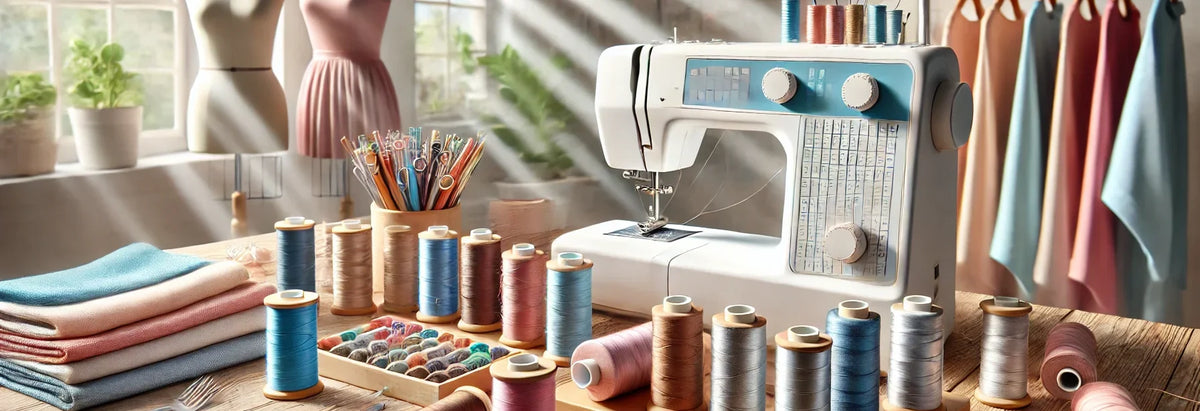Navigating the Thread Maze: A Guide to Choosing the Right Thread for Your Project
Navigating the Thread Maze: A Guide to Choosing the Right Thread for Your Project
Selecting the right thread is one of those often-overlooked steps that can make or break your project. The thread is the glue of the stitch, and different types serve different purposes. Here's how to navigate your options with confidence.
1. Tailoring Threads to Tasks
- Machine Embroidery: Choose threads with a shiny, smooth finish designed to glide easily through embroidery machines. These threads enhance design definition and resist breakage at high speeds.
- Decorative Stitching: Add flair with metallic or specialty threads. Use a topstitching needle and slower speed to avoid thread breakage and looping.
2. The Fiber Spectrum
- Cotton: Natural and matte. Great for quilting and projects involving natural fabrics. It’s slightly less elastic than synthetic threads.
- Rayon: High sheen and vibrant color. Best for machine embroidery and decorative stitching.
- Polyester: Strong, colorfast, and versatile. It works for most general sewing tasks and is ideal for stretch or synthetic fabrics.
3. Thread Thickness Matters
- Fine Threads (60 wt and thinner): Ideal for delicate fabrics, detailed work, and bobbin thread. Use a smaller needle for best results.
- Standard Threads (40–50 wt): Common for general use. Balances strength and smoothness across most materials.
- Heavy Threads (30 wt and thicker): Use for topstitching, upholstery, or visible decorative work. Requires larger needles and adjusted tension.
4. Match Thread to Machine and Fabric
Thread that’s too thick or too slick for your needle or machine can cause skipped stitches, breakage, or tension problems. Always test the thread before starting your project, and consult your manual for thread compatibility if in doubt.
5. Think Ahead: Proactive Thread Planning
- Match thread type and weight to your fabric type and purpose.
- Always buy a little extra—colors and dye lots can vary between batches.
- Store threads properly to avoid tangles, dust, and sun damage.


As you embark on your sewing adventures, remember that thread isn’t just functional — it’s part of the art. Make it count by matching thread to task, fiber to fabric, and thickness to tension.
Looking for more sewing tips? Check out our Understanding Sewing Machine Feet or our guide to Precision in finishing seams for inspiration.



